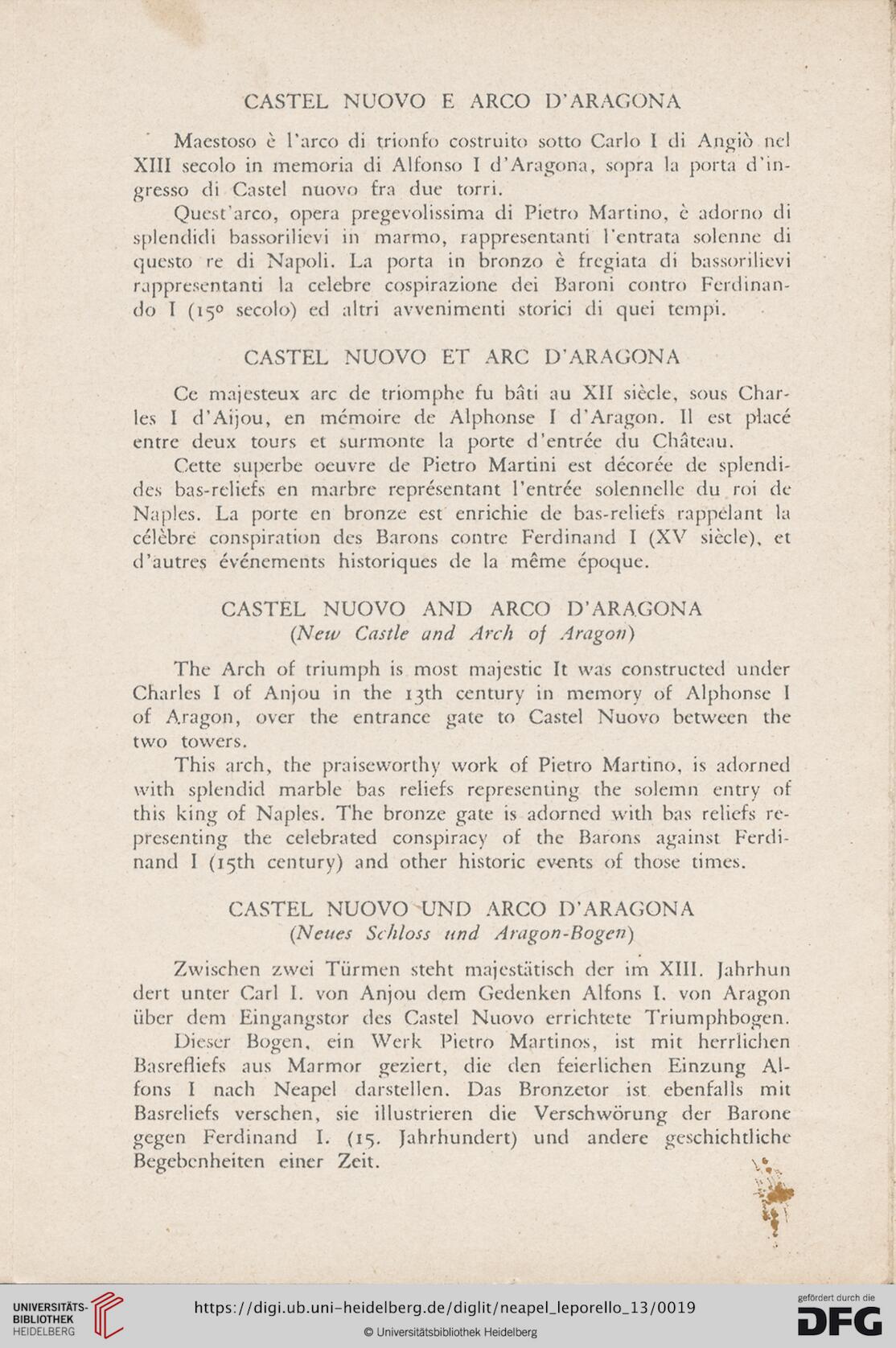CASTEL NUOVO E ARCO D’ARAGONA
Maestoso è l’arco di trionfo costruito sotto Carlo I di Angiò nel
XIII secolo in memoria di Alfonso I d'Aragona, sopra la porta d’in-
gresso di Castel nuovo fra due torri.
Quest’arco, opera pregevolissima di Pietro Martino, è adorno di
splendidi bassorilievi in marmo, rappresentanti l'entrata solenne di
questo re di Napoli. La porta in bronzo è fregiata di bassorilievi
rappresentanti la celebre cospirazione dei Baroni contro Ferdinan-
do I (150 secolo) ed altri avvenimenti storici di quei tempi.
CASTEL NUOVO ET ARC D’ARAGONA
Ce majesteux arc de triomphe fu bâti au XII siècle, sous Char-
les I d’Aijou, en mémoire de Alphonse I d'Aragon. Il est placé
entre deux tours et surmonte la porte d'entrée du Château.
Cette superbe oeuvre de Pietro Martini est décorée de splendi-
des bas-reliefs en marbre représentant l’entrée solennelle du roi de
Naples. La porte en bronze est enrichie de bas-reliefs rappelant la
célèbre conspiration des Barons contre Ferdinand I (XV siècle), et
d’autres événements historiques de la même époque.
CASTEL NUOVO AND ARCO D'ARAGONA
(New Castle and Arch of Aragon)
The Arch of triumph is most majestic It was constructed under
Charles I of Anjou in the 13th century in memory of Alphonse 1
of Aragon, over the entrance gate to Castel Nuovo between the
two towers.
This arch, the praiseworthy work of Pietro Martino, is adorned
with splendid marble bas reliefs representing the solemn entry of
this king of Naples. The bronze gate is adorned with bas reliefs re-
presenting the celebrated conspiracy of the Barons against Ferdi-
nand I (15th century) and other historic events of those times.
CASTEL NUOVO UND ARCO D’ARAGONA
(Neues Schloss und Aragon-Bogen)
Zwischen zwei Türmen steht majestätisch der im XIII. Jahrhun
dert unter Carl I. von Anjou dem Gedenken Alfons I. von Aragon
über dem Eingangstor des Castel Nuovo errichtete Triumphbogen.
Dieser Bogen, ein Werk Pietro Martinos, ist mit herrlichen
Basrefliefs aus Marmor geziert, die den feierlichen Einzung Al-
fons I nach Neapel darstellen. Das Bronzetor ist ebenfalls mit
Basreliefs versehen, sie illustrieren die Verschwörung der Barone
gegen Ferdinand I. (15. Jahrhundert) und andere geschichtliche
Begebenheiten einer Zeit.




